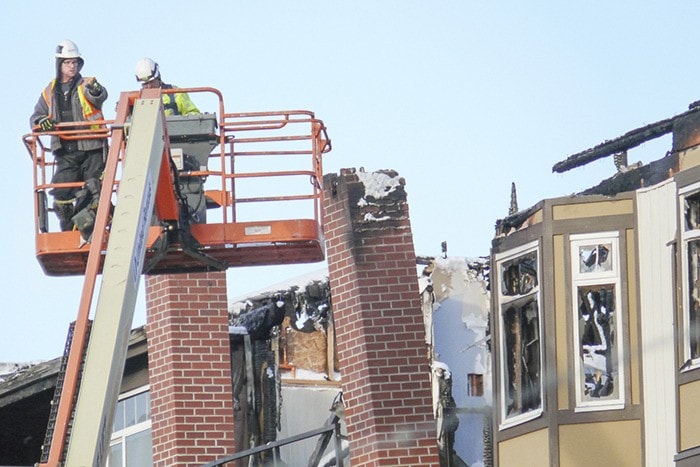Editor: Our son, daughter-in-law and granddaughter were planning to stay overnight at our home Christmas Eve to get an early start opening Santa’s gifts.
As a result of the Paddington fire on Dec. 11, they came much earlier than planned, and are with us for the unforeseen future.
Our home, in which they are now residing, is a side-by-side duplex in Surrey.
The walls on all levels adjoining our neighbour have a two-hour fire wall protection.
In addition, this fire wall continues up into the attic between the rafters, tight to the underside of the roof, to prevent — or at least slow down — a fire passing from one side of the duplex attic to the next.
Our home was built in 1996/97. Paddington was built in 2008 — more than 10 years later.
The Paddington fire travelled, unimpeded, from one attic space above the original source of the fire throughout the attic space of the entire building, as most of the 84 tenants watched in desperation and dismay, and the firefighters tried to prevent the fire from spreading to other buildings.
What if, like our home, fire walls continued into the Paddington attic providing a fire break between each of the approximately 20 units on the top floor?
What if the building designers, builders, City of Langley and fire suppression engineer acknowledged the proven fire risk of the approved attic structure and did something to reduce the known potential future impact?
What if the builder added approximately $1,000 to the cost of each unit in Paddington to install the fire wall separations above each of the top floor units? Would this .005 per cent cost increase/unit turn away buyers?
What if those involved in the design, approval, building construction and inspection of Paddington treated their role as if it was going to result in their potential home being built?
Might they have acted on the known fire risk to prevent the preventable, or at least reduce the magnitude of the event?
What if all parties involved in the Paddington building construction stopped deflecting, showed some organization ethic and took a stand to ensure an unsafe building like Paddington is never built/approved by them in the future?
If what was designed for the Paddington fire-destroyed building is the same structure as its sister building on the adjacent Paddington land, what can be done to remediate a known fire risk and potential future personal and financial disaster for its owners/tenants, and the Langley community?
If what was built in our Surrey home in 1997 to protect two families from a catastrophic fire was known to be necessary and economically viable, why was this same basic proven fire suppression strategy not employed 10 years later for 84 families in Paddington?
The Paddington fire was caused by smoking materials discarded by a careless tenant/owner.
The magnitude of the consequences of this act were the result of choices made by informed professionals who knew better, but acted based on other priorities.
Robert Freeman,
Surrey
